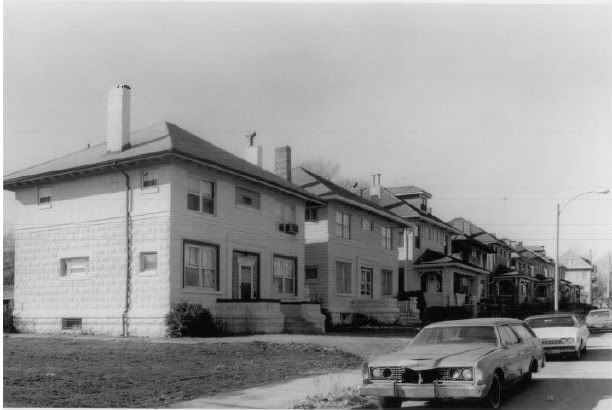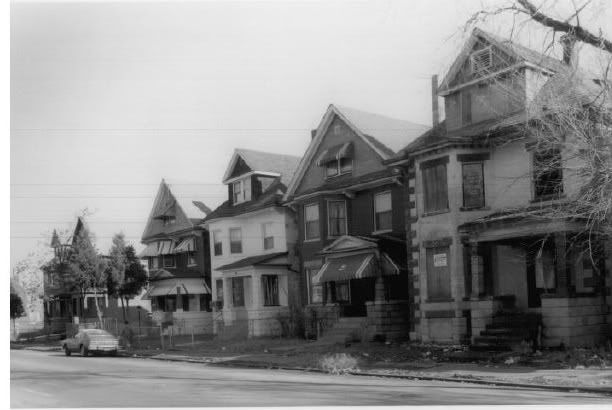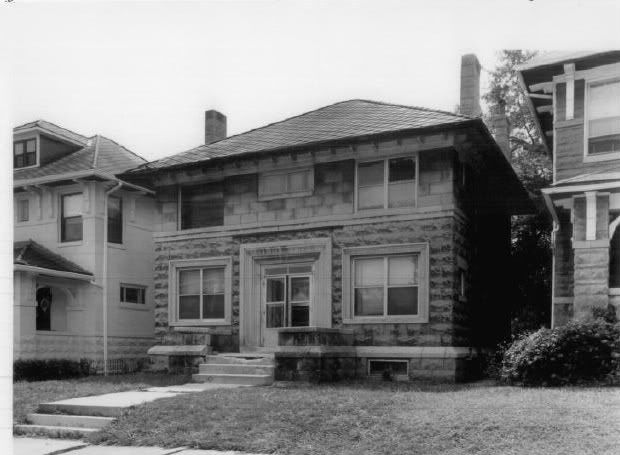Since I have a list of all the properties in the City of St. Louis by date of construction (that is, according to the Assessor's Office, and where this information is available), I thought I would begin posting on the
city's oldest remaining structures. My list is from 2007, so it will be interesting to see what is still remaining.
It is sort of counterintuitive to start a countdown at the most coveted spot, but it is also difficult to determine where to start on the other end. So I'll begin with the oldest listed date of construction for a structure in the city of St. Louis. And I have a big feeling that it's a total mistake.
First, though, how do you spot an old building in your neighborhood. Well, what is old, I guess, is the first thing you need to figure out. In the city of St. Louis, anything pre-1880 is lucky to be there still. Even so, St. Louis has quite a few scattered pre-1880 structures, mostly in a couple neighborhoods (Soulard, Old North, Hyde Park, Benton Park, etc.). If it's pre-Civil War, and it's not a monumental, public, or religious structure, it's extremely lucky to still be standing. Think the DeMenil Mansion in Benton Park or the Bissell Mansion in Hyde Park.
The second sign of an especially old building is a sudden break from the street wall. Often, these buildings were intended for rural settings, as they were the first structures on their blocks, certainly, and perhaps in their "neighborhoods" for quite a number of years. Their construction predated any sort of formal zoning, for sure, as well as informal zoning and early urban development.
Another sign, often, is simplicity and small size. Many post-Colonial buildings were fairly small and unadorned structures. Colonial buildings were often very functional, rather than decorative, stressing symmetry and utility in daily life. They needed to be simple to heat in the wintertime, another reason for their small size.
But I just don't believe there's anything left from 1810's St. Louis. At that time, St. Louis only had a couple thousand people, if that.
Here is a quote about St. Louis in 1809, from the
City's website.
Frederick Billon, who first saw St. Louis in 1809, described the town as virtually unchanged in over forty years. At that time, he said, there were but two roads ascending the bluff from the river at the present locations of Market and Oak (Delmar) Streets. They were abrupt ascents that had been quarried by the settlers for access to the river for water. He further commented that in 1809, Fourth Street south of Elm was a road with only two or three houses.
Structures in just-post-Colonial St. Louis were crude and often temporary. I cannot imagine that this building has been around since 1810, or all of the preservation community would know of it.
Nevertheless, it's at the bottom of the list, and so I'll report on it:
It's actually two almost contiguous properties: 3324 and 3328 North Ninth, in the section of Hyde Park that was trapped east of Interstate 70 upon its construction.

Unfortunately, Google Streetview largely ignored the North Side, so I'm relegated to this somewhat inconclusive Microsoft Live Maps view.
Still, from the looks of it, I do believe the building with the extreme setback (a former "slave quarters"?) could be quite old. But I am really not sure of the stone building on the southeast corner of Angelrodt and Ninth. Next time in St. Louis I will have to take a look.
Anyone care to do an investigation for me?















































